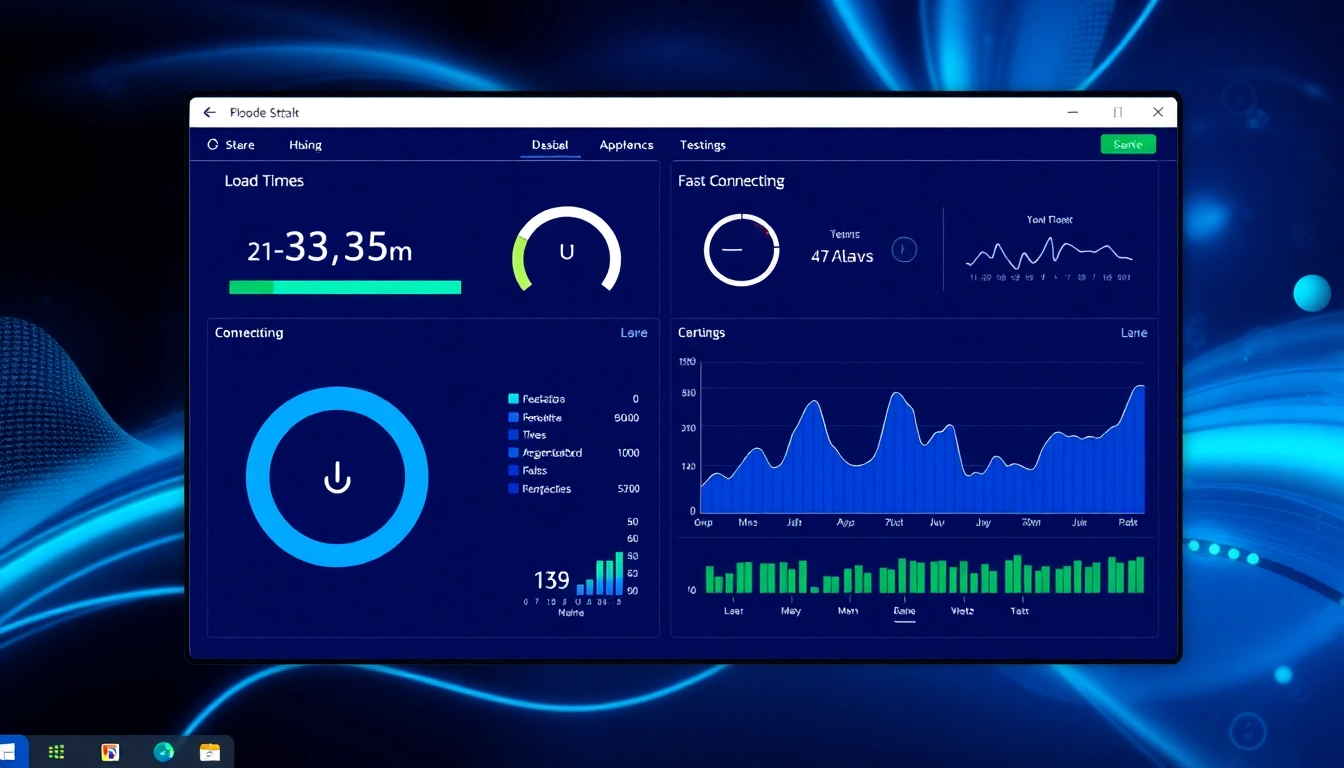Comprehensive Guide to Cs Teste: Speed, Reliability, and Best Practices for Optimal Results
Understanding Cs Teste: Purpose and Key Features
The landscape of online testing tools has grown exponentially, especially within gaming communities, where latency, reliability, and server performance directly influence player experience. Among these tools, cs teste has emerged as a vital resource for gamers and developers aiming to optimize their network and server environments. But what exactly is Cs Teste, and how does it serve its users? This section explores the core concept, functionalities, and key features that define Cs Teste as a comprehensive testing solution.
What is Cs Teste and How Does It Work?
Cs Teste is an advanced testing platform designed specifically for the gaming community, especially for games like Counter-Strike (CS), which is highly sensitive to network conditions. Essentially, it provides real-time diagnostics of network latency (ping), packet loss, jitter, and server response times. This information is crucial for gamers who seek to achieve optimal ping rates for smoother gameplay, as well as developers who need to ensure server stability and performance under various conditions.
The platform operates by initiating a series of network requests to game servers, measuring response times, and analyzing network quality. These tests simulate actual gameplay scenarios, allowing users to evaluate how their connection performs during critical moments. By providing detailed metrics, Cs Teste empowers users to pinpoint network bottlenecks, identify poor performance areas, and implement targeted improvements.
Benefits of Using Cs Teste for Gamers and Developers
The benefits of employing Cs Teste are multifaceted, impacting both individual players and larger development teams. For gamers, it offers insights into latency issues, enabling them to choose the best servers for their location, troubleshoot persistent lag, and verify the stability of their internet connections before competitive play. For developers and server administrators, it provides valuable data on server responsiveness, load handling, and network health, facilitating informed decisions about infrastructure upgrades.
Moreover, Cs Teste supports pre-game preparation by allowing users to perform comprehensive benchmarks, measure the impact of different network configurations, and maintain ongoing performance monitoring—enhancing overall gameplay quality and user satisfaction. Its intuitive interface combined with detailed analytics makes it an invaluable tool in the realm of online gaming.
Common Challenges Faced During Testing Processes
Despite its advantages, testing network performance with Cs Teste can present several challenges. Variability in internet speeds, fluctuating bandwidth, and external network congestion can produce inconsistent results. Also, testing from different geographic locations or during peak usage hours might skew data, making it difficult to establish baseline performance levels.
Additionally, interpreting the technical data accurately requires some expertise; users unfamiliar with networking terminology might struggle to identify actionable insights. Overcoming these hurdles involves understanding how to set up controlled testing environments, standardize testing procedures, and interpret metrics effectively—topics that are covered comprehensively in later sections.
Setting Up Your Cs Teste Environment
Required Tools and Hardware Specifications
To maximize the benefits of Cs Teste, ensure your setup meets certain technical requirements. A stable internet connection with minimal fluctuations, preferably wired Ethernet rather than Wi-Fi, significantly improves test accuracy. The hardware should be capable of supporting the testing software without bottlenecks—modern PCs with at least 8GB RAM, dedicated network adapters, and updated operating systems are recommended. For mobile testing, smartphones with recent updates and a reliable data plan are suitable.
Step-by-Step Guide to Configuring Your Tests
- Download and install the Cs Teste application or access its web platform if available.
- Configure basic settings, including selecting the desired server location, test duration, and specific parameters like packet size.
- Prior to testing, close all unnecessary background applications to prevent bandwidth interference.
- Connect via a wired connection for maximum stability or ensure your Wi-Fi signal is strong and stable.
- Initiate the first test, observing real-time data to identify immediate issues such as high ping or packet loss.
- Repeat with different servers, times of day, or network configurations to gather comprehensive data.
By following these steps, users can establish a reliable baseline, enabling informed adjustments to improve connection quality.
Ensuring Accurate and Consistent Results
Consistency in testing is vital for meaningful analysis. Schedule tests during similar network usage periods, avoid bandwidth-heavy activities concurrently, and record conditions meticulously. Use multiple devices or locations, if feasible, to cross-verify data. Additionally, maintain the same hardware and software environment throughout testing sessions to eliminate extraneous variables. Creating a standardized testing protocol ensures data reliability, which is essential for making strategic network improvements.
Best Practices for Effective Cs Teste
Optimizing Network Settings for Lower Latency
Achieving lower latency involves several network optimizations. Prioritize wired connections over Wi-Fi to reduce interference. Configure Quality of Service (QoS) settings on your router to allocate bandwidth to gaming traffic. Disable unnecessary background applications consuming network resources. Use DNS servers optimized for your region, and consider upgrading your internet plan if persistent throttling occurs. These actions collectively reduce latency, providing a better gaming experience.
Analyzing and Interpreting Test Data
Understanding network metrics is crucial. A ping under 50ms is generally optimal for gaming, while packet loss above 1% indicates potential issues. Jitter represents variability in latency; lower jitter ensures more stable connections. When reviewing data, look for patterns over multiple tests—consistent high ping or packet loss signals underlying network problems that require resolution. Use visualization tools, such as graphs and heatmaps, to identify fluctuation patterns and pinpoint problematic segments.
Automating Tests for Ongoing Performance Monitoring
Automation tools enable continuous performance tracking. Scheduling regular tests during different times and network loads provides comprehensive insights. Many platforms support scripting or integration with network monitoring software, alerting you instantly when performance dips below acceptable thresholds. This proactive approach allows for timely intervention—whether adjusting configurations, contacting ISPs, or upgrading hardware—ensuring consistent and optimal gaming conditions.
Advanced Techniques and Tips
Customizing Tests to Match Specific Use Cases
Tailoring tests to mirror real-world scenarios enhances their relevance. For example, simulate gameplay conditions by adjusting packet sizes or introducing latency injection. Test specific servers or regions where players frequently connect. Custom scripts can evaluate server response under load, or assess the impact of VPN usage. These specialized tests generate deeper insights, empowering users to address unique challenges effectively.
Integrating Cs Teste With Other Testing Tools
Combining Cs Teste with other network monitoring or game analytics tools can provide a holistic view. Some platforms support APIs for data export, enabling integration with dashboards or automation scripts. Use complementary tools to monitor server health, bandwidth utilization, and player behavior, creating a layered approach to performance optimization. Such integration facilitates comprehensive diagnostics and strategic planning.
Performance Metrics to Track for Continuous Improvement
Focus on key indicators like average ping, packet loss percentage, jitter, and server response times. Tracking these over time helps to identify trends and the effects of network adjustments. Setting benchmarks and thresholds guides ongoing monitoring. Additionally, measuring improvements post-optimization ensures that efforts translate into tangible benefits, maintaining high-quality gameplay experiences.
Case Studies and Practical Applications
Real-World Scenarios of Cs Teste Success Stories
Many gaming communities have leveraged Cs Teste to optimize their connection and server stability. For instance, a professional esports team used detailed latency analysis to select the best regional servers, gaining a competitive advantage. Small gaming clans adopted regular testing routines, reducing lag spikes during tournaments. Such cases underscore the importance of proactive performance monitoring and data-driven decision-making.
Common Pitfalls and How to Avoid Them
Common mistakes include inconsistent testing conditions, ignoring background network activities, and misinterpreting data. To avoid these, establish standardized testing protocols, minimize interference during tests, and seek guidance or training on networking metrics. Additionally, relying solely on single test results without measuring over time can lead to false conclusions—consistent repeated testing ensures accuracy.
Future Trends in Gaming and Network Testing
Emerging technologies such as 5G, edge computing, and AI-driven analytics promise to revolutionize network testing. Real-time adaptive systems will dynamically optimize network paths, reducing latency on the fly. Furthermore, integrated platforms combining game telemetry with network diagnostics could offer personalized, predictive performance enhancements, elevating user experiences to new levels.

